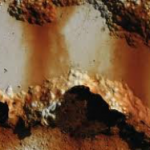Corrosion Control for Silo
Corrosion is Part of Silo Maintenance
 Corrosion on silo is a natural process where materials, typically metals, deteriorate due to chemical or electrochemical reactions with their environment. It often involves the formation of rust on metals, weakening their structure over time.
Corrosion on silo is a natural process where materials, typically metals, deteriorate due to chemical or electrochemical reactions with their environment. It often involves the formation of rust on metals, weakening their structure over time.
Corrosion can be influenced by factors such as moisture, oxygen, and various contaminants, and it can lead to degradation, discoloration, and ultimately, the loss of material integrity.
Preventive measures, such as protective coatings or material selection, are commonly employed to mitigate corrosion and extend the lifespan of affected items.
Common Maintenance Needs for Silo
1. Corrosion Control: Regularly inspect and address any corrosion issues to prevent structural damage.
2. Cleaning: Remove accumulated debris, dust, or residues to maintain optimal conditions.
3. Seal Inspection: Check seals and gaskets for wear or damage to ensure airtight conditions.
4. Painting: Apply protective coatings to prevent corrosion and enhance the lifespan of the silo.
5. Structural Integrity: Monitor and repair any cracks or structural issues to maintain stability.
6. Ventilation Inspection: Ensure proper ventilation to prevent moisture buildup and potential issues like mold.
7. Safety System Checks: Regularly test safety systems such as pressure relief valves and level indicators.
8. Pest Control: Implement measures to prevent infestations and damage caused by pests.
9. Monitoring Systems: Install and maintain monitoring systems to detect issues early, such as temperature and pressure sensors.
10. Foundation Inspection: Check and repair the silo’s foundation to ensure stability and prevent settling.
Regular and proactive maintenance is crucial to extend the lifespan of silos and prevent unexpected failures.
Corrosion Control for Silo
Corrosion control for silo involves implementing measures to prevent or mitigate the corrosive effects that can compromise the structural integrity of the silo. Here’s an elaboration:
1. Inspections: Regular visual inspections should be conducted to identify any signs of corrosion. Inspect all surfaces, including walls, joints, and support structures.
2. Material Selection: Choose corrosion-resistant materials for construction or consider protective coatings. Materials like stainless steel or galvanized steel offer better resistance to corrosion.
3. Protective Coatings: Apply corrosion-resistant coatings to the surfaces of the silo. This can include paints or specialized coatings designed to withstand the environmental conditions to which the silo is exposed.
4. Cathodic Protection: Implement cathodic protection systems, such as sacrificial anodes or impressed current systems, to prevent corrosion by directing the corrosion activity away from the silo structure.
5. Moisture Control: Corrosion often accelerates in the presence of moisture. Ensure proper drainage and waterproofing to minimize exposure to water.
6. Environmental Monitoring: Regularly monitor environmental conditions, such as humidity and temperature, as these factors can contribute to corrosion. Implement measures to control these conditions if necessary.
7. Cleaning and Surface Preparation: Remove any contaminants or debris from the surfaces before applying protective coatings. Proper surface preparation ensures the coatings adhere effectively.
8. Seal and Gasket Maintenance: Ensure that seals and gaskets are in good condition to prevent water infiltration, as water ingress can accelerate corrosion.
9. Regular Maintenance Schedule: Establish a routine maintenance schedule that includes inspections, cleaning, and coating application. Regular maintenance helps identify and address corrosion issues promptly.
10. Education and Training: Train personnel responsible for silo maintenance about the factors contributing to corrosion and the proper techniques for control. This can include recognizing early signs of corrosion and understanding the importance of preventative measures.
By implementing these corrosion control measures, the integrity and longevity of the silo structure can be significantly enhanced, reducing the risk of failure due to corrosion.
Corrosion Cleaning for Silo
Cleaning for silos is a crucial aspect of maintenance to ensure optimal performance and prevent issues such as material contamination, blockages, or corrosion. Here’s an elaboration on silo cleaning:
1. Debris Removal: Regularly remove accumulated debris, dust, and foreign materials from the interior surfaces of the silo. This prevents material buildup that could lead to blockages and affect the flow of stored substances.
2. Residue Elimination: Clean out any residual materials left after emptying the silo. This is especially important to prevent cross-contamination when switching between different stored materials.
3. Cleaning Method Selection: Choose appropriate cleaning methods based on the type of material stored and the construction of the silo. Methods may include manual cleaning, pressure washing, or mechanical cleaning systems.
4. Safety Measures: Prioritize safety during the cleaning process. Use proper personal protective equipment (PPE) and follow safety protocols. Ensure proper ventilation, and be cautious of potential hazards, such as confined spaces.
5. Access Points Inspection: Check and maintain access points, such as hatches and doors, to facilitate the cleaning process. Ensure they are in good condition and functioning properly.
6. Confined Space Procedures: If the silo requires entry for cleaning, follow confined space entry procedures. This includes proper ventilation, atmospheric testing, and monitoring for potential hazards.
7. Equipment Inspection: If mechanical cleaning equipment is used, inspect it regularly to ensure it is in good working condition. This includes checking hoses, nozzles, and other components.
8. Frequency of Cleaning: Establish a regular cleaning schedule based on the nature of the stored materials and usage patterns. Some materials may require more frequent cleaning to prevent issues.
9. Preventive Measures: Implement preventive measures to minimize the need for extensive cleaning. This may include proper sealing to prevent material spillage and the use of liners to facilitate easier cleaning.
10. Documentation: Keep records of cleaning activities, including dates, methods used, and any issues identified. This documentation can be valuable for tracking maintenance history and identifying trends.
Regular and thorough cleaning of silos is essential for maintaining the quality of stored materials, ensuring efficient operations, and preventing safety hazards associated with material buildup or contamination.


